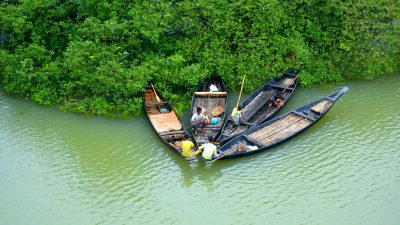A Glimpse Into the Storm’s Fury
On 18th September 1906, Hong Kong was struck by one of the deadliest typhoons in its history, a storm that would forever alter the landscape of the city and the lives of its inhabitants. The ferocity of this natural disaster, often overshadowed by more recent catastrophic events, remains etched in the collective memory of the region. Packing winds that reached up to 160 km/h (100 mph), the typhoon ravaged the city with an unrelenting fury, turning the bustling port and vibrant streets into scenes of chaos and devastation. In a matter of hours, Hong Kong transformed from a thriving metropolis to a city in ruins, with its infrastructure, homes, and businesses reduced to rubble. The typhoon’s brutality would claim thousands of lives, leaving an indelible scar on the community for years to come.
This storm was not just another natural disaster—it was a harbinger of nature’s raw power, a chilling reminder that no matter how advanced a city may be, it is ultimately at the mercy of the elements. The scale of the destruction was unimaginable. Homes were washed away, entire neighbourhoods submerged, and the city’s critical port facilities were left in shambles. What made the tragedy even more profound was the unpreparedness of the time. Hong Kong’s infrastructure was not designed to withstand such a violent force of nature. The colonial authorities, caught off guard by the storm’s magnitude, struggled to respond effectively, and the lack of early warning systems only exacerbated the loss of life. As the death toll soared, the storm left a profound gap in the city’s resilience, forcing Hong Kong to reconsider its approach to disaster preparedness for decades to come.
The Hong Kong Typhoon of 1906 was not merely a statistic of nature’s wrath—it was a turning point in the city’s history. The survivors, though few in number, would never forget the terrifying hours spent huddling in the dark as the storm raged overhead, knowing that everything they held dear was on the line. Even in the face of such overwhelming loss, the typhoon’s aftermath spurred a collective drive for reconstruction and modernisation. Yet, the question remains: did Hong Kong ever truly recover? Or did the storm leave a psychological imprint on the city, shaping its future in ways that we are only now beginning to understand? In the chapters that follow, we will delve deeper into the events of that fateful day, exploring the profound effects the typhoon had on Hong Kong’s people, its government, and its growth as a global economic powerhouse.
The Typhoon’s Meteorological Details: A Storm Like No Other
- Origin of the Typhoon:
The Hong Kong Typhoon of 1906 originated in the Pacific Ocean, where many of the most powerful storms in the region begin. As it gathered strength over the warm waters, it slowly moved westward, intensifying as it approached the coast of southern China. Although meteorological records were not as precise as today’s, historical accounts suggest the storm developed rapidly, catching both residents and authorities off guard. Its final approach toward Hong Kong was marked by an ominous shift in atmospheric pressure, which heralded the impending disaster.
- Wind Speeds and Intensity:
At its peak, the typhoon produced winds that reached up to 160 km/h (100 mph). While today this wind speed would classify the storm as a Category 2 on the Saffir-Simpson scale, its effects were far more catastrophic than many contemporary storms of the same classification. The ferocity of the winds was destructive enough to tear through buildings, uproot trees, and generate massive waves along the coast. This intense force caused widespread damage throughout Hong Kong, particularly along its waterfront, which housed its most vital ports and industries.
- Storm Surge and Rainfall:
Beyond the high winds, the typhoon brought an unprecedented storm surge and torrential rainfall that submerged large portions of the city. The surge, driven by the typhoon’s powerful winds, inundated the low-lying areas of Hong Kong, resulting in severe flooding. Alongside this, the storm dumped heavy rainfall that lasted for several hours, overwhelming drainage systems and causing additional flooding, further complicating the efforts of survivors and rescue teams. This combination of strong winds, heavy rain, and storm surge contributed to the disastrous flooding that ravaged the city.
- Lack of Forecasting and Early Warning Systems:
In 1906, the technology to predict and track storms was rudimentary, leaving Hong Kong ill-prepared for the typhoon. The absence of modern meteorological instruments meant that the storm’s severity was not anticipated in advance. The local population, as well as the colonial authorities, had little to no warning before the typhoon struck with full force. Without the ability to track the storm’s movements or predict its intensification, the city was caught completely off guard, leading to a catastrophic loss of life and property.
- The Typhoon’s Speed and Landfall:
Once the typhoon began to approach Hong Kong, its speed increased, making it difficult for the city to respond. The storm made landfall in the early morning hours, catching most residents still asleep. Its rapid approach left little time for evacuation or even for the authorities to issue warnings. The swift and unexpected nature of the storm’s landfall compounded the difficulty of mounting a successful defence against the destruction it caused. This rapid strike added to the intensity of the crisis, ensuring that the city would bear the full brunt of its force.
Human Toll: The Grim Stats of Casualties and Deaths
- Estimated Death Toll: The Hong Kong Typhoon of 1906 claimed an estimated 10,000 to 12,000 lives, though the exact number remains uncertain. This staggering loss highlights the devastating impact of the storm on the city’s population.
- Injuries and Displacement: Thousands more were injured, and countless families were left homeless, forced to seek shelter in makeshift camps or in the ruins of their destroyed homes. The homeless population grew rapidly, further complicating recovery efforts.
- Public Health Crisis: With the floodwaters lingering in the aftermath of the storm, many survivors faced an outbreak of diseases like cholera and dysentery. Stagnant water, coupled with limited access to medical care, exacerbated the death toll in the weeks that followed the typhoon.
- Impact on Lower-Income Areas: The storm hit the poorer neighbourhoods, including those in Kowloon, particularly hard. These areas, often built with less robust materials, were more susceptible to damage, leading to higher casualty rates and slower recovery.
- Psychological Toll: The tragedy left a profound psychological mark on the survivors, many of whom had lost loved ones, homes, and livelihoods. The collective trauma shaped the social fabric of Hong Kong for generations, leaving an emotional scar that would influence the city’s disaster preparedness and urban development.
Survivors’ Stories: Personal Accounts and Testimonies
The survivors of the 1906 Hong Kong Typhoon experienced unimaginable terror as they watched their homes, families, and lives be torn apart by the storm’s wrath. One survivor recalled clutching his family in the dark, hearing the deafening roar of the wind and the crashing waves as their home in Sheung Wan was consumed by the floodwaters. The storm’s sheer force left no place untouched, and many survivors were forced to scramble to higher ground, often with little more than the clothes on their backs. For those who managed to survive the storm’s immediate impact, the true horror began afterwards—digging through the debris for loved ones or trying to escape the sickness that followed in the typhoon’s wake.
The emotional trauma ran deep. Families torn apart, homes reduced to rubble, and entire neighbourhoods lost forever left survivors grappling with a sense of hopelessness. In Victoria Harbour, once a symbol of prosperity, survivors were left to sift through the wreckage, facing not only the shock of the destruction but the uncertainty of the future. Stories from that time tell of the strength and resilience of the human spirit, but also of the overwhelming grief and loss. The typhoon’s legacy lived on in the survivors’ hearts, as they rebuilt their shattered lives amidst the ruins of their city, forever haunted by the storm that changed everything.
The Government Response: Was It Enough?
When the Hong Kong Typhoon of 1906 hit, the response from the colonial government was nothing short of inadequate. Caught completely off guard, the authorities scrambled to put together a plan as the city drowned in floodwaters. With no early warning systems, no clear evacuation plans, and limited resources, the government’s reaction seemed more like a panic than a well-orchestrated disaster response. Was this the best the British colonial administration could offer? With thousands of lives at risk and entire districts submerged, the lack of preparedness left many wondering whether the authorities even understood the scale of the disaster until it was far too late.
The aftermath was equally disturbing. While officials promised swift action, the recovery process dragged on, and the relief efforts appeared disjointed at best. In a city teeming with international trade and wealth, how could a disaster of this magnitude expose such vulnerabilities? The lack of a cohesive response not only deepened the suffering but also raised critical questions about the government’s priorities. Did they truly care about the people of Hong Kong, or was the focus on restoring the financial heart of the city—Victoria Harbour—before addressing the needs of the survivors? The 1906 typhoon served as a cruel reminder of the government’s failure to protect its people, a failure that would haunt Hong Kong’s disaster preparedness for years to come.
The Typhoon’s Legacy: Lessons Learned and Hong Kong’s Resilience
The devastating impact of the 1906 Hong Kong Typhoon should have been a wake-up call for the city’s infrastructure and emergency systems. With 10,000 to 12,000 lives lost, it was clear that Hong Kong was woefully unprepared to face such a destructive force of nature. The destruction left in the wake of the typhoon’s winds, floods, and storm surge was not just a tragedy—it was an urgent cry for action. How could a city that was thriving as a global economic powerhouse allow itself to be so vulnerable to such a disaster? This tragedy forced Hong Kong to reevaluate everything from its emergency planning to its building codes, sparking a movement to bolster the city’s resilience against future storms.
But did the typhoon’s legacy truly change the course of Hong Kong’s future? Victoria Harbour, the lifeblood of the city’s economy, was rebuilt, but at what cost? The storm left a permanent mark on Hong Kong’s approach to disaster management. In the years following the typhoon, Hong Kong invested heavily in strengthening its infrastructure, creating better evacuation systems, and implementing improved forecasting techniques. Yet, the city’s true test came in the decades that followed—when new storms inevitably came. The lessons from 1906 were painfully clear: prepare, act fast, and rebuild stronger. But as climate change continues to make storms more unpredictable and powerful, can Hong Kong’s resilience truly stand up to the next devastating typhoon?
The Global Context: Typhoons and the Asian Pacific Region
Typhoons, also known as cyclones or hurricanes depending on the region, are a constant, brutal threat in the Asian Pacific region—home to the most typhoon-prone countries in the world. Hong Kong’s 1906 typhoon was one of the deadliest, but it was far from an isolated event. Every year, the Pacific Ocean churns out storms of increasing intensity, devastating coastal cities in China, Philippines, Japan, and Vietnam. The region is regularly pummeled by multiple typhoons during the typhoon season, which runs from May to November. In fact, the Philippines alone experiences around 20 typhoons annually, many of which strike with the same kind of ferocity as the one that ravaged Hong Kong in 1906.
But what’s truly alarming? As climate change accelerates, the intensity and frequency of typhoons are only set to increase. Meteorologists have already noted that the strongest typhoons are becoming even more powerful, with larger storm surges and extreme rainfall. Super Typhoon Haiyan in 2013, for example, packed winds up to 315 km/h (195 mph), far exceeding the force of the 1906 Hong Kong typhoon, leaving thousands of dead in the Philippines. And the stark reality is that many of these coastal cities, including Hong Kong, have not yet done enough to future-proof their infrastructures against these escalating threats. Are governments truly ready for the storm of the century, or will we keep watching in horror as nature deals blow after blow to this vulnerable region? The typhoon of 1906 should have been a wake-up call, but with the changing climate, it’s clear that the region is only bracing for even worse to come.
Impact on Hong Kong’s Development: The Long-Term Effects
The 1906 Hong Kong Typhoon wasn’t just a natural disaster; it marked a pivotal turning point in the city’s evolution, forcing it to confront its vulnerabilities in a way few could have predicted. The widespread destruction of infrastructure, particularly in areas like Central, Sheung Wan, and along Victoria Harbour, was a harsh reminder of the city’s lack of preparedness. This catastrophe exposed the inadequacies of Hong Kong’s urban planning, particularly its failure to protect vital economic zones from natural disasters. As a result, the colonial government, backed by international influence, implemented sweeping changes in the years that followed. Hong Kong would rebuild, but this time, it would do so with a stronger focus on creating a city that could withstand future typhoons. The typhoon’s long-term effect was seen in the development of better drainage systems, stronger buildings, and more resilient port infrastructure. The recovery efforts propelled the city into a new era of modernisation, where disaster resilience became a cornerstone of urban planning.
However, the 1906 typhoon also had a subtler yet equally significant impact—shaping Hong Kong’s psyche and its future response to natural disasters. The destruction and loss of life left a scar that would influence the city for generations. For years, the typhoon served as a tragic reminder that no matter how prosperous a city became, nature was an uncontrollable force that could obliterate it in an instant. In the decades that followed, Hong Kong became more proactive in its disaster preparedness, especially as typhoons continued to strike. This change wasn’t just about physical rebuilding—it sparked a shift in the city’s collective mindset. Today, as the city faces increasing threats from climate change and more intense storms, the lessons of 1906 continue to echo. Hong Kong’s resilience, forged in the aftermath of that devastating typhoon, remains a vital part of its identity as it continues to evolve and adapt to an unpredictable future.
Conclusion
The 1906 Hong Kong Typhoon stands as a grim reminder of nature’s unpredictable power and the fragility of human infrastructure. The staggering loss of 10,000 to 12,000 lives and the widespread destruction reshaped the city, forcing Hong Kong to confront its vulnerabilities and embrace resilience. The lessons learned from this disaster were pivotal in transforming Hong Kong into a city that now prioritises disaster preparedness and robust infrastructure. Yet, as climate change heightens the frequency and intensity of typhoons, the shadow of 1906 looms large, urging Hong Kong to continue evolving and fortifying itself against future storms. The victims may be gone, but their legacy lives on in the city’s ongoing resilience.
FAQ: Hong Kong Typhoon 1906
- What caused the Hong Kong Typhoon of 1906?
The typhoon was a result of a tropical storm system that developed in the Pacific Ocean, gaining strength as it moved towards the South China coast.
- How did the government react to the typhoon?
The colonial government was caught off guard due to the lack of early warning systems and had a slow, disorganised response to the crisis.
- What areas were most affected by the typhoon?
The hardest-hit areas were Central, Sheung Wan, Victoria Harbour, and Kowloon, where the storm surge caused significant flooding and destruction.
- How did the typhoon impact Hong Kong’s economy?
The typhoon devastated the city’s key port infrastructure, particularly in Victoria Harbour, significantly disrupting trade and commerce for months.
- What improvements were made in Hong Kong after the 1906 typhoon?
Hong Kong focused on rebuilding stronger infrastructure, implementing improved drainage systems, and enhancing disaster preparedness to withstand future storms
Reference:
“How disaster struck Hong Kong 110 years ago”
https://www.scmp.com/magazines/post-magazine/short-reads/article/2019688/how-disaster-struck-hong-kong-110-years-ago
“A historical re-analysis of the calamitous midget typhoon passing through Hong Kong on 18 September 1906”
https://repository.library.noaa.gov/view/noaa/61974
“In the eye of the storm: Typhoons in Hong Kong”
https://multimedia.scmp.com/typhoons/
“The calamitous typhoon at Hongkong, 18th September, 1906, being a full account of the disaster”
https://www.chinacultureandsociety.amdigital.co.uk/Documents/Detail/the-calamitous-typhoon-at-hongkong-18th-september-1906-being-a-full-account-of-the-disaster/133895
“1906 Hong Kong typhoon – Wikipedia”
https://en.wikipedia.org/wiki/1906_Hong_Kong_typhoon
YT link:
Typhoon Hato batters Hong Kong – BBC News
The history of deadly Hong Kong typhoons that caused widespread devastation




